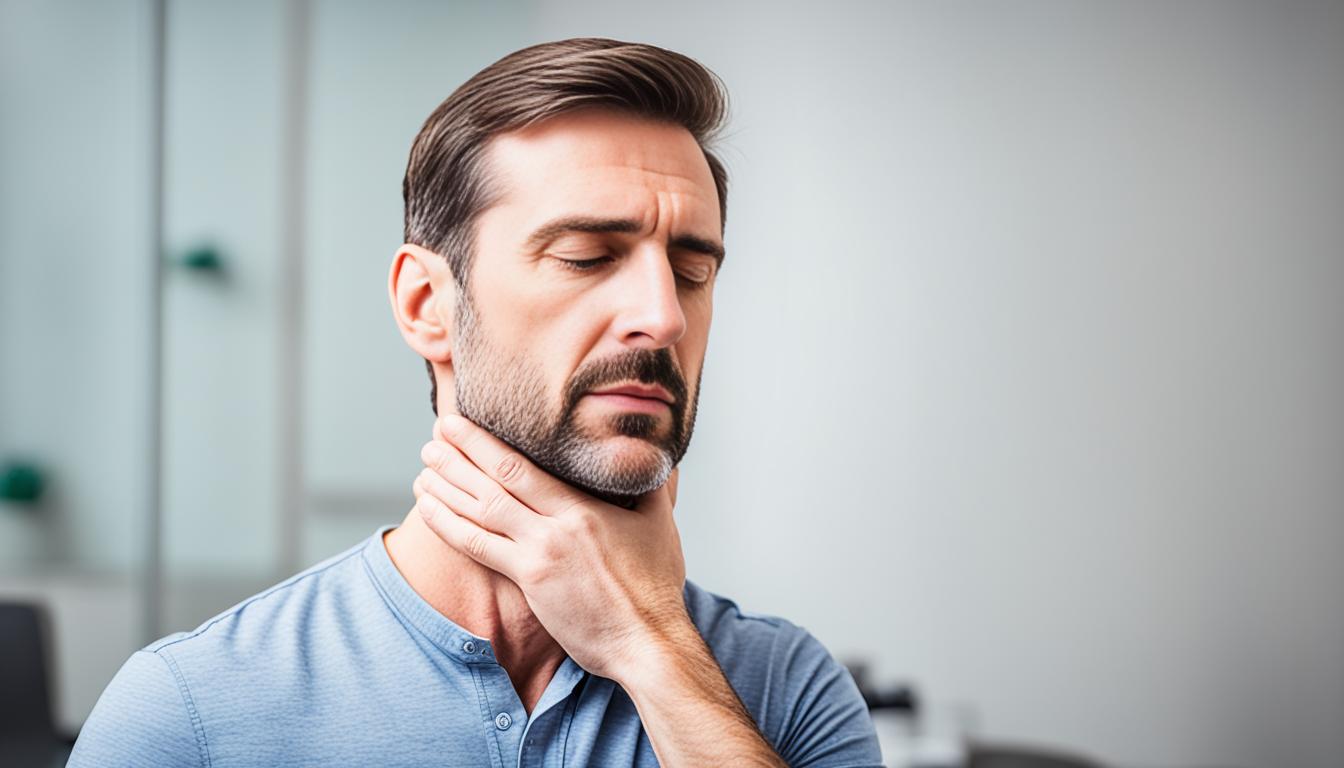Spasmodic Torticollis is a rare disorder that affects the neck muscles. It causes the muscles to contract involuntarily. This leads to abnormal movements and postures, such as twisting the chin toward a shoulder. People with this condition may also tilt their head in different directions.
Its exact cause is not fully understood. But, it likely involves a mix of genetic and environmental factors. Diagnosing it involves a clinical exam and looking at the patient’s history. There are no specific tests for it.
Treatments usually involve botulinum toxin injections for temporary relief by weakening the muscles. However, stem cell therapy shows hope for those with spasmodic torticollis. This therapy aims to help repair damaged nerve cells and improve symptoms.
Key Takeaways:
- Spasmodic Torticollis affects the neck muscles and is rare.
- It leads to the chin twisting, head tilts, and head shifting on shoulders.
- The cause of this disorder is not clear, but genes and environment may be involved.
- Diagnosing it is by examination and looking at the patient’s history since no specific tests confirm it.
- Botulinum toxin injections are often used for short-term symptom relief.
- Stem cell therapy is a new treatment that might help by fixing damaged nerve cells.
Signs & Symptoms of Spasmodic Torticollis
Spasmodic torticollis can make your head and neck move in strange ways. You might see the chin twist toward a shoulder. The head and neck can take on odd positions too, such as tilting forward or to the side. Sometimes, it feels like the head shifts on the shoulders. And you might notice shaky hands when you move or stand a certain way.
Things like stress or excitement can make spasmodic torticollis worse. But, some patients find relief in simple actions, like touching their cheek or the back of their head. If there’s any pain, it usually happens on the same side where the head turns. The pain can be low or high.
Common Symptoms of Spasmodic Torticollis:
- Twisting of the chin towards a shoulder
- Abnormal postures of the head and neck
- Tilting of the head forward, backward, or to one side
- Shifting of the head on the shoulders
- Postural tremor of the hands (in some cases)
- Pain on the same side as the head turn
When it comes to spasmodic torticollis, symptoms can be different for everyone. If these signs sound familiar, it’s a good idea to see a doctor. They can give you the right diagnosis and suggest the best treatment.
References:
- Mayo Clinic. (2021). Cervical Dystonia. https://www.mayoclinic.org/diseases-conditions/cervical-dystonia/symptoms-causes/syc-20354107
- National Organization for Rare Disorders. (2021). Torticollis. https://rarediseases.org/rare-diseases/torticollis/
| Signs & Symptoms | Description |
|---|---|
| Twisting of the chin towards a shoulder | Torticollis is a key sign of spasmodic torticollis. The chin turns towards one shoulder. |
| Abnormal postures of the head and neck | Spasmodic torticollis causes the head and neck to take on unusual positions, like tilts and shifts. |
| Tilting of the head forward, backward, or to one side | Heads may tilt in various directions, creating the condition’s distinct postures. |
| Shifting of the head on the shoulders | Heads might move forward or backward on the shoulders, which adds to the odd movements. |
| Postural tremor of the hands (in some cases) | Some people with spasmodic torticollis might notice their hands tremble while holding certain postures. |
| Pain on the same side as the head turn | It’s common to feel pain on the side where the head twists. This pain can be mild or severe. |
Treatment Options for Spasmodic Torticollis
There are several ways to treat spasmodic torticollis. One common treatment is using botulinum toxin injections.
These injections help by weakening the neck muscles that cause trouble. This can reduce the twisting and pain in the neck. The relief from these shots lasts a few months. You might need more shots to keep feeling better.
Another option is taking pills to control the twitching and neck movements. This helps in some kids with a more widespread muscle problem. Doctors often prescribe medicines that act on your brain chemicals. These medicines can make the neck muscles move more smoothly.
Doing specific activities and exercises can also help a lot. Physical therapy aims to make your neck move easier and look straighter. It can lower the stiffness in your muscles too.
Stem cell therapy is a new area of interest for this disease. There’s hope that stem cells might repair the nerve damage in the neck. Researchers are looking into how well this therapy works. The early signs are encouraging.

